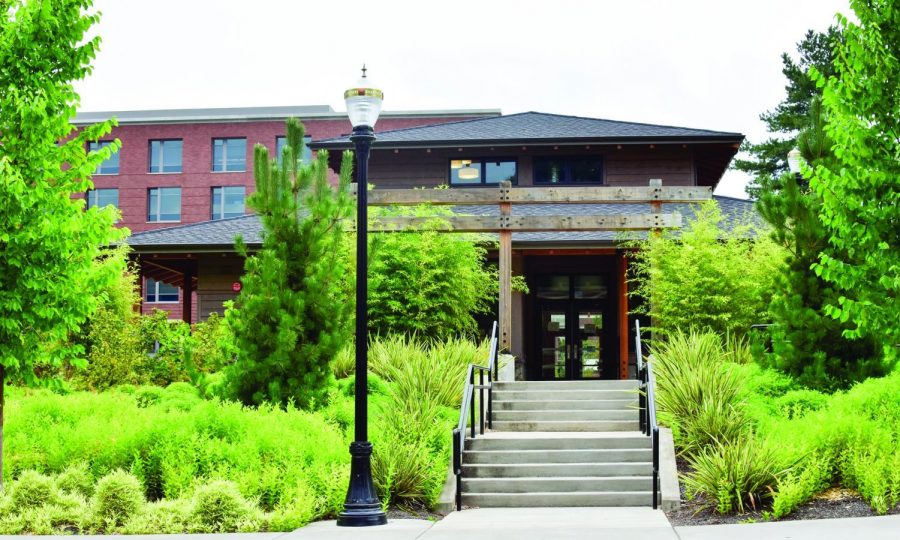APCC offers community engagement, learning opportunities
September 15, 2017
In the heart of the Oregon State University campus, plants native to Asia surround one of the few buildings constructed from the ground up: the Asian Pacific Cultural Center.
Located on Jefferson Street, the APCC offers opportunities for members of the Asian and Pacific Islander community to engage in cultural experiences and is open to all members of Oregon State University to learn about diversity.
“We provide opportunities for learning around the intersectional experiences of Asians and Pacific Islanders,” Reagan Le, assistant director with the APCC, said via email. “We do this by providing transformative learning opportunities through student employment, civic engagement, professional development and program/events.”
Inside the building are an array of physical spaces for students to participate in activities such as social engagements during club events, academic tutoring, preparing meals in the community kitchen and studying.
According to Le, the APCC focuses on students of Asian and Pacific Islander descent, but it is a learning space for all to feel welcome and safe, regardless of race, gender, sex, ability and other social identities. Everyone is free to enjoy and take part of the events that take place year round put on by the center and affiliated student organizations.
“It’s a strong statement from OSU that we’re financially invested in building a culturally relevant and inclusive space for students,” Le said via email.
Beyond the physical structure, the APCC has created a strong community of student clubs that have created a home away from what they know, according to Nat Chutipanyaporn, an OSU alumnus and former president of the Asian Pacific American Student Union club.
“Corvallis is a college town, so chances are that people are not from the town, so it is really nice that people come together and form that community,” Chutipanyaporn said.
Currently, 17 student-organized clubs make up the APCC community and are available to students.
“As for the educational part, being asian, you’re called asian, but there are sub cultures beyond that, which helps when people come from different backgrounds of the asian culture, and there are so many of them,” Chutipanyaporn said.
Within each club, members have an opportunity to join an officer team to gain leadership experience and create new friendships with other students. Chutipanyaporn said he gained knowledge from his position in leadership that has helped him beyond Oregon State University.
“The leadership position has helped beyond OSU and it provides people skills. You can’t go to class and do homework and get those skills,” Chutipanyaporn said.
An opportunity for members of the clubs are the annual culture shows that showcase communities within the APCC. Food is often provided by the club that reflects the traditional taste of the culture represented.
Julie Nguyen, an OSU Vietnamese Student Association member, found her place within the Asian and Pacific Islander community after attending a culture show.
“I didn’t commit myself until the culture shows started. It made me really feel at home because everyone was working hard together to make the show,” Nguyen said. “It wasn’t one person who made it possible, it was everyone as a whole. That made me want to be more involved in the API community.”
According to Le, cultural resource centers are safe spaces to develop a feeling of community where students can get a sense of belonging. They engage in multiple opportunities that are designed for critical inquiry and learning.
“It’s a home away from home for some folks and also a space to further develop their understanding of their multiple identities,” Le said via email.
The annual Asian and Pacific Islander Welcome Event is on Sunday, Sept. 24 from 4-6 p.m. at the APCC. For further information, the APCC is open from 10 a.m. to 7 p.m. on Monday through Thursday, and 10 a.m. to 5 p.m. on Fridays.
“Make an effort to talk to people, because that’s when you really get the most out of it and make those connections,” Chutipanyaporn said. “Whatever it is, get involved with something.”










































































































